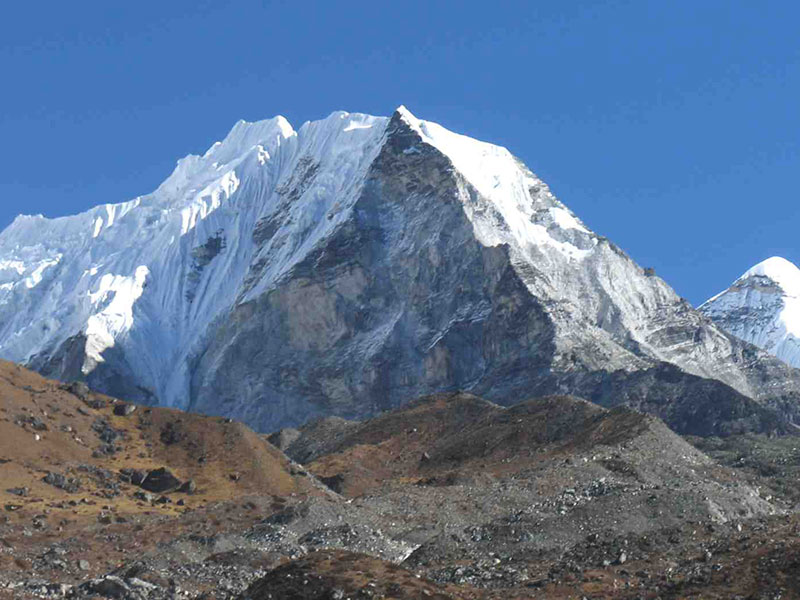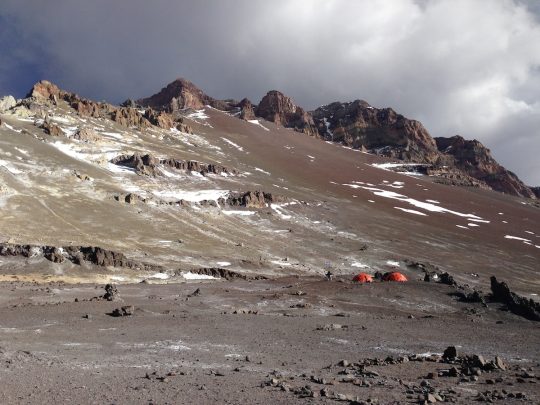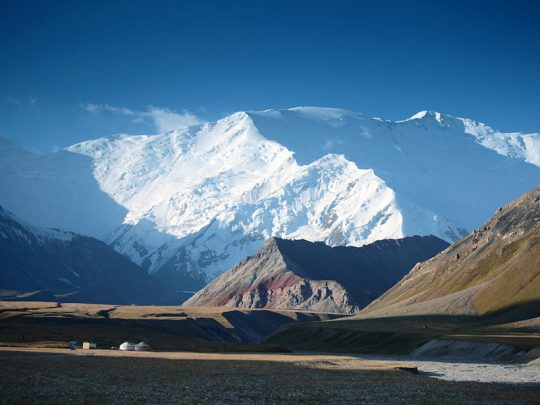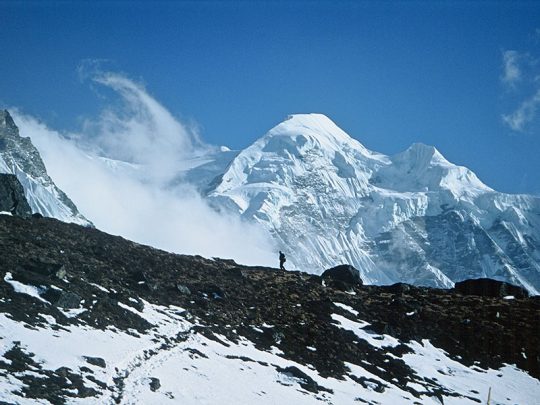- Guides
- B2B
-
Climbs
-
Climb Elbrus
- Elbrus individually
- Elbrus from the South, 9 days
- Elbrus from the South, 7 days
- Elbrus from the South in 1 day
- Elbrus from the North
- Elbrus Two Summits
- Elbrus Traverse South to North
- Elbrus Traverse North to South
- Elbrus "Cross" from South
- Elbrus "Cross" from North
- Kazbek+Elbrus
- Elbrus from the West
- Elbrus by helicopter
- Elbrus holidays, 9 days
- Elbrus holidays, 7 days
- Tinder Tour: Climbing Mount Elbrus
- Climb Elbrus from the South, 9 days with Sergey Baranov
- Under 5000 m
- 5000+ meters
- 6000+ meters
- 7000+ meters
- 8000+ meters
-
Climb Elbrus
-
Trekking
-
See 8000m
- K2 base camp
- Everest base camp
- Everest base camp via Gokyo
- Everest base camp in a week
- Annapurna circuit
- Trekking the Manaslu Circuit
- Trekking to Kanchenjunga Base Camp
- Trekking to Kanchenjunga Base Camp (Short)
- Trekking to Kanchenjunga Base Camp (India)
- Trekking to Makalu Base Camp
- Trekking to Annapurna BC
- South America
- Asia
- Africa
- Russia
- Europe
-
See 8000m
-
Adventures
-
Africa
- Tour to Morocco for New Year
- Morocco: Toubkal and the mysteries of the Sahara
- Tour to Eritrea: Dahlak Archipelago and Rashaida Nomads
- Tour to Rwanda: Mountain Gorillas and Mount Bisoke
- Ethiopia
- Tour to Uganda: Queen Elizabeth National Park and Mountain Gorillas
- Safari Tanzania
- Safari Uganda
- Tour to Zimbabwe and South Africa: Victoria Falls, Cape Town, and Cape of Good Hope
- Namibia
- Safari Kenya
- Tour to Botswana: Okavango Delta and Chobe National Park
- South America
- Asia
-
Africa
- Ski-touring
- VIP
- Useful
- About
Climb Island peak

- Height (m)
- 6165
- Duration
- 18 days
- Difficulty
- Moderate
- Continent
- Asia
- Children
- No
- Accomodation
- There are tents
3129 $
Why to go with us?
About the tour The “normal” route to climb Island Peak is passing through the mountain’s south-eastern slope and its south-western ridge. It begins in the village of Chukhung. After crossing a small stream, we will step on the trail leading to the base of Island Peak. The trail is passing over a moraine ridge, and […]
About the tour
The “normal” route to climb Island Peak is passing through the mountain’s south-eastern slope and its south-western ridge. It begins in the village of Chukhung. After crossing a small stream, we will step on the trail leading to the base of Island Peak. The trail is passing over a moraine ridge, and after reaching a small plain gorge near the river, turns to the left from it. The next section of the route passes through a valley, and then turns to a passage between walls of moraine on the right, which will take us to a dried up lake. Then the trail turns to the right again and passes between Island Peaks’ slopes and walls of moraine. Located there, at an elevation of 5100m is the Base Camp, from which many of climbers begin their ascent. It takes about two to three hours to get there.
A bit further from the Base Camp one can see a distinct path leading to the left, for a pretty steep, an hour-plus long ascent to Attack Camp (at an elevation of 5500m). Please keep in mind that this camp may encounter difficulties with water supply, but usually there is some snow between rocks.
From Attack camp we will start our climb Island peak to the rock coloir. At the beginning, the trail passes by the left side of the coloir, getting close to rocks, then it shift to the right side. There are access towers and platforms for setting up tents throughout this section of the route. Further on we will be finding our way with the help of those towers since the path gets lost in rockslides, reappearing closer to the glacier.
The section of the route passing through the glacier is full of crevasses. Usually this trail is pretty busy, so the path is well-trodden and leads to a steep snowy slope. During the climbing season this slope is usually equipped with guard-ropes consisting or three or four ropes up to the spot where it reaches the beginning of summit ridge. After that, the trail turns to the right, leading up 100m, and passes over a narrow ridge to the very summit. Descent is made by the same route.
Itinerary for a Guided Island Peak Climb.
Day 1. Arrive in Kathmandu. Hotel accommodation. Dinner and instructing the group. Rest after the flight.
Day 2. Transfer from Kathmandu to Ramechap for departure to Lukla (2860 m) and trekking to Pakding (2610 m). On the second day, the group flies from Kathmandu to Lukla on a small plane. The flight takes about 45 minutes. The track starts from Lukla already. The path passes through Sherpa farms and villages along the trail and leads to the Dudkoshi River, and then down to Pakding. Along the way you will meet the Tadokola River, from its shore you can admire the magnificent view of Kusum Kanguru. Then the river is crossed by a suspension bridge and after a short climb the group goes to the village of Ghat. Another hour and a half walk and the group arrives at the village of Phakding, where they stop for the night. Night at the lodge.
Day 3. Trekking to Namche Bazar (3440 m, 6 hours). Night at the lodge.
Day 4. Day at Namche Bazaar to acclimatize to a height. Walk to the Japanese hotel, whence in good weather overlooking Everest. Night at the lodge.
Day 5. Trekking to Pangboche, (5-6 hours, 3928 m.) Night at the lodge.
Day 6. Trekking to Pheriche (4240m). The trail passes through high hinged bridges, above the “boiling” through the huge white boulders streams. Night at the lodge.
Day 7. Trekking to Lobuche (4940m). The rise on the plateau, on which with a small climb we will approach the moraine of the Khumbu glacier. Night at the lodge.
Day 8. Trekking to Gorak Shep (5164m). From Lobuche, the group makes a two-hour trek along a winding rocky path to Gorak Shep, from where there is a beautiful view of the Kala Pathara, Pumori, Nuptse Mountains and the Gorak Shep valley. Then the group stays at the hotel, takes a break for tea, and then we visit the Everest base camp (5364m). Return to Gorak Shep (5164 m). Night at the lodge.
Day 9. Climbing to the top of Kala Pattar (5,645 m). The ascent is quite difficult due to the thinness of the air. In the “hot“ season, this road is quite crowded and busy. A large number of people travel to Nepal just tosee Mount Everest and the Khumbu Glacier. It offers a great view of Mount Pumori. The ascent to the top of Kala Pattar from Gorak Shep takes about two to two and a half hours. Then the group returns to the hotel for the night. Descent to Dingboche, rest. Overnight in the lodge.
Day 10. Trekking Dingboche to Chukung. Night at the lodge..
Day 11. Trekking from Chukung to the “high camp”. Setting up a tent camp. The journey from Chukung is 5-6 hours. Overnight in tents.
Day 12. Climbing Island Peak (6165 m). About 6-7 hours up and 3-4 hours down. Descent to Chukung. Night at the lodge.
Day 13. Reserve day.
Day 14. Descend to Pangboche. Night at the lodge.
Day 15. Descent to Namche Bazar. Night at the lodge.
Day 16. Trekking from Namche Bazar to Lukla. Night at the lodge.
Day 17. Flight from Lukla to Ramechap. Transfer to Kathmandu. Overnight at the hotel.
Day 18. Breakfast in the hotel. Transfer to the airport. Departure.
The cost of Island peak climb includes:
- Experienced English speaking guide
- Nepalese guide. Assistant guides on the day of the ascent (absolutely strictly 1 guide for 3 clients, that is, if there are 4 clients in the group, then there will already be two guides)
- Meeting / seeing off at the airport
- Hotel accommodation in Kathmandu 4*, 2 nights
- Accommodation in loggias on the track
- Accommodation and meals in tents during the ascent
- Group climbing equipment (high-altitude tents, gas, burners, ropes, etc.)
- Porters for group equipment and products for BC
- Permit to climb Island Peak
- Registration of all necessary permits for trekking (permit for trekking / permit / entrances to national parks, etc.), if required by law or local rules of Nepal
- Garbage deposit
Not included in the cost of Island peak climb:
- International flight
- Domestic flight by plane Ramechhap-Lukla-Ramechhap by plane ($400-450)
- Transfer for departure to Lukla Kathmandu-Ramechap-Kathmandu Airport ($300 per group)
- Visa (done at the airport, cost about $50)
- Insurance covering mountain climbing and helicopter evacuation
- Meals in the track (25-35 dollars per day)
- Porter for personal equipment ($25 per day) porter’s insurance is included (yes, we insure all staff)
- Tips
- Any deviation from the program
- Any costs caused by the changing of the programs
Equipment.
Скачать PDFDocumentation:
- international passport
- Airplane tickets
- Medical insurance covering helicopter evacuation
Personal equipment:
- Backpack 30-50l.
- Sleeping bag, comfort temperature from -20C.
- Mat
- Trekking poles
- Cats of steel
- Ice axe with self-insurance
- climbing system
- Helmet
- Carabiners – 4 pcs.
- Lanyard mustache
- Zhumar
- descender
- Mug-spoon-bowl
Clothes and shoes:
- Climbing boots triple or double. Double – plastic or leather
- Trekking boots are WELL impregnated in advance with a special anti-water agent
- Sneakers (for the city)
- Waterproof membrane layer – jacket + trousers
- fleece suit
- Thermal underwear top+bottom
- Middle class puff
- Warm mittens
- Gloves are thick
- Thin gloves
- Bandana or buff (in addition to protection from the Sun in the valley, it can be used to warm the throat or face in the cold)
- Cap
- Warm trekking socks for climbing day
- Windproof mask for the lower part of the face
Travel Accessories:
- LED flashlight for head
- Powerbank
- Sunglasses
- Raincoat
- Rain cover for backpack
- Ski goggles
- Thermos – 1l. Preferably without a button in the lid
- Sunblock spf 50
- lip balm spf 10-15
- Leggings
- Chemical heating pads (not required, but can be very helpful)
- Personal medical kit
- Elastic bandage and/or support bandage
- Toothpaste, brush, soap, shampoo, slippers
- Towel
- Toilet paper (sold in loggias along the way)
You may also like
-
 4,500 $
4,500 $Climb Aconcagua, 12 days
- Height (m)
- 6957
- Duration
- 12 days
- Difficulty
- Moderate
- Continent
- South America
-
 3,200 $
3,200 $Climb Lenin peak
-
 2,950 $
2,950 $Climb Mera peak